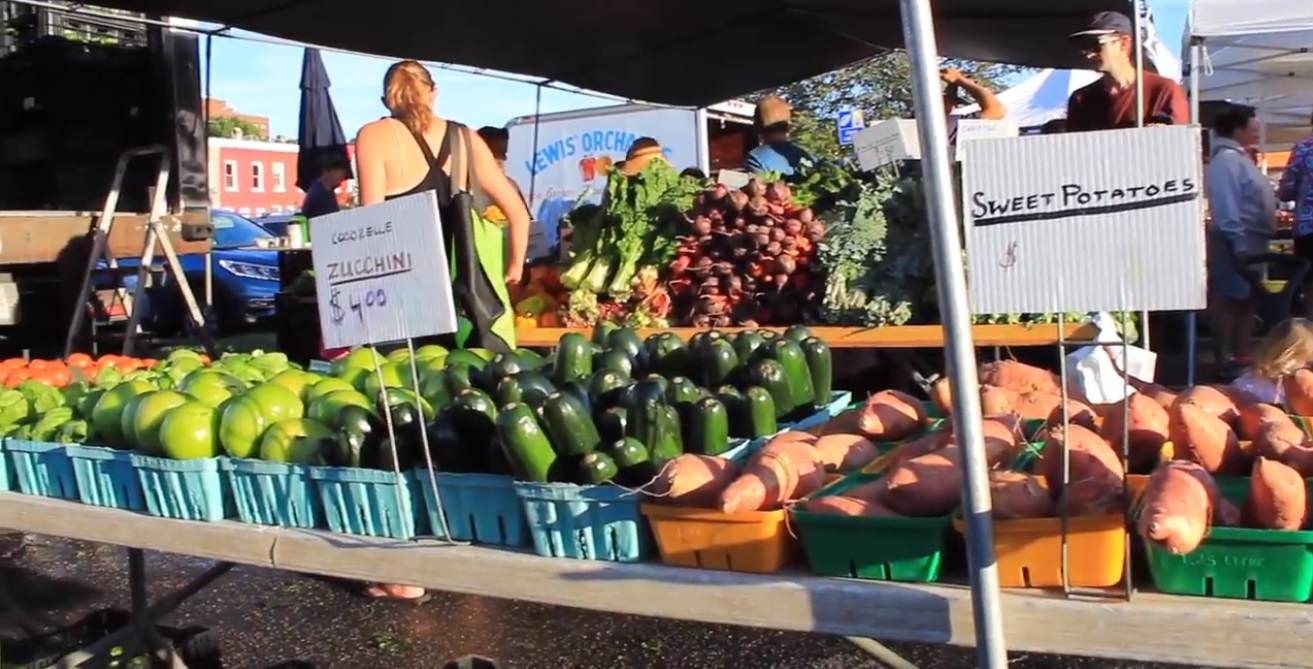Maryland needs to invest in farm-fresh food for low-income families
By Alicia LaPorte
Fair Farms Maryland
For MarylandReporter.com
Maryland has the opportunity to move forward on a win-win program that directly invests in farmers throughout the state and helps low-income families purchase local and farm-fresh food. But we need Gov. Larry Hogan’s support to ensure the program receives funding.
The Maryland Farms and Families Act (SB 278, HB 586) passed unanimously through the General Assembly and was signed into law by Gov. Hogan in May. The new law creates a grant program in the Maryland Department of Agriculture that would match farmers market purchases made with federal nutrition benefits, such as SNAP (food stamps).
The goal is to bring additional revenue to local farmers and fresh produce to food-insecure families. Now that our state has wisely chosen to support this program, it’s time for decision-makers to allocate the funds necessary for the grant program to flourish in 2018. Farmers market matching programs are a modest and worthy investment.
Farmers market matching programs
Agricultural communities in Maryland and neighboring states have experienced first-hand how incredibly successful farmers market matching programs can be. For the past few years, the Maryland Farmers Market Association, a nonprofit organization, has been administering a statewide matching program for low-income families at select markets across the state, and doing so almost entirely with private dollars. To date, the program has distributed $460,000 to food-insecure Marylanders, which in turn has generated over $1.4 million dollars in revenue for farmers at participating markets.
Unfortunately, these private funds are inconsistent from season to season. State investment would create a public-private partnership, allowing matching programs to expand throughout Maryland, including on the Lower Eastern Shore.
Gov. Hogan has shown a strong propensity to support these types of cooperative arrangements between the public and private sectors, which typically mean sharing expertise, resources, and skills in order to accomplish shared goals, such as fostering economic development and supporting healthy outcomes in communities.
Economic benefits
The economic benefits of this program for rural and agriculture communities are clear. The funds requested, up to $500,000, are just a thin sliver in the Maryland Department of Agriculture’s $94 million budget and would have direct and exponential impacts for the local economy. The investment would:
- Generate revenue for farmers and agricultural producers;
- Channel federal dollars into local Maryland economies;
- Benefit farmers markets statewide, particularly in rural and food desert communities, and creates a new customer base for these markets;
- Provide critical nutrition assistance to low-income families by expanding access to fresh fruits, vegetables, and other healthy foods;
- Help stabilize and support rural communities by providing an additional income for small farmers selling at farmers’ markets.
Gov. Hogan and the General Assembly both support this program, but to make it a reality, we need their collective agreement that the program is worthy of funding in the 2018 state budget.
Alicia LaPorte is campaign manager of Fair Farms Maryland, [email protected]
<iframe width=”560″ height=”315″ src=”https://www.youtube.com/embed/aUlkYnS9o8E” frameborder=”0″ allowfullscreen></iframe>

MarylandReporter.com is a daily news website produced by journalists committed to making state government as open, transparent, accountable and responsive as possible – in deed, not just in promise. We believe the people who pay for this government are entitled to have their money spent in an efficient and effective way, and that they are entitled to keep as much of their hard-earned dollars as they possibly can.

